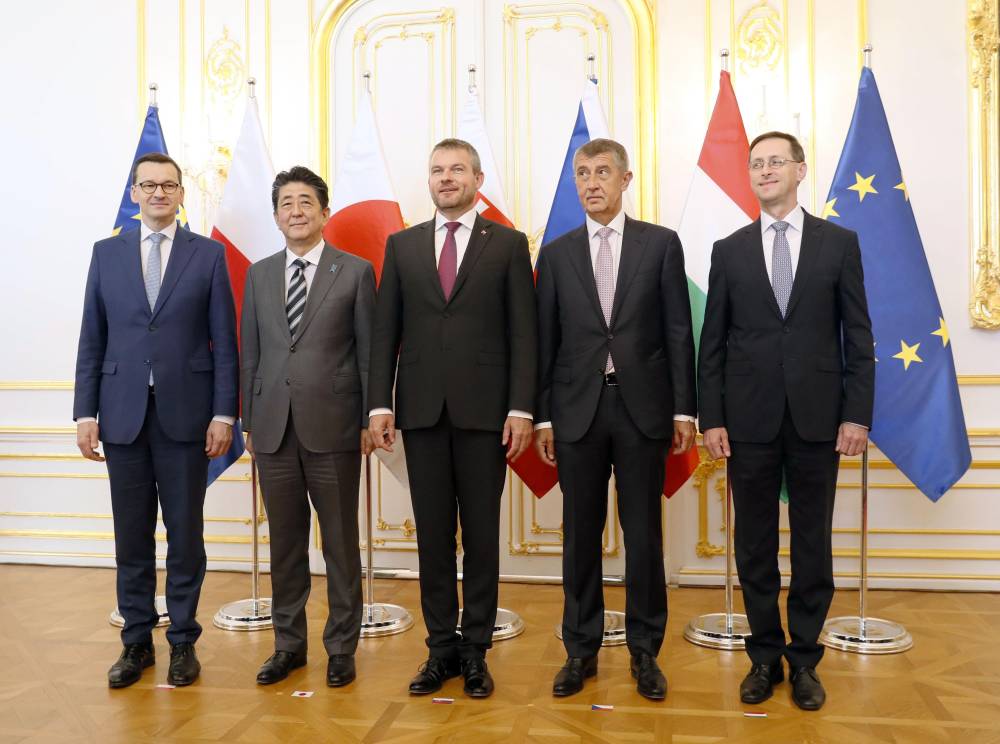Much has been written about the reinvigoration of the Japan-EU relationship after signing the strategic and economic partnership in the last few years. But Japanese rapprochement to the EU does not end in Brussels. In recent years, another European platform has been activated by Abe’s proactive policy: The Visegrad 4.
The summits of the V4+Japan framework in 2018 and 2019 sparked optimism about the opportunities and possibilities of this form of cooperation. But even though there is an observable expansion to the relationship, it remains far from becoming an institutionalized framework and faces radical challenges that might make it obsolete shortly after coming to life.
The V4 relationship with Japan has some solid roots. This year, the Czech Republic and Slovakia celebrate 100 years of official relations with Japan, Poland made the connection 101 years ago and Hungary, as part of the Austrian-Hungarian empire, 150 years back. For most of this history, however, the geographic distance and lack of common interests made cooperation shallow. In the 1950s, these newly communist countries restarted official relations that were severed by the war, but Japanese focus on its relationship with the Soviet Union (and not its components) hampered any potential for future economic or political progress.



